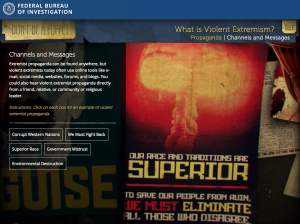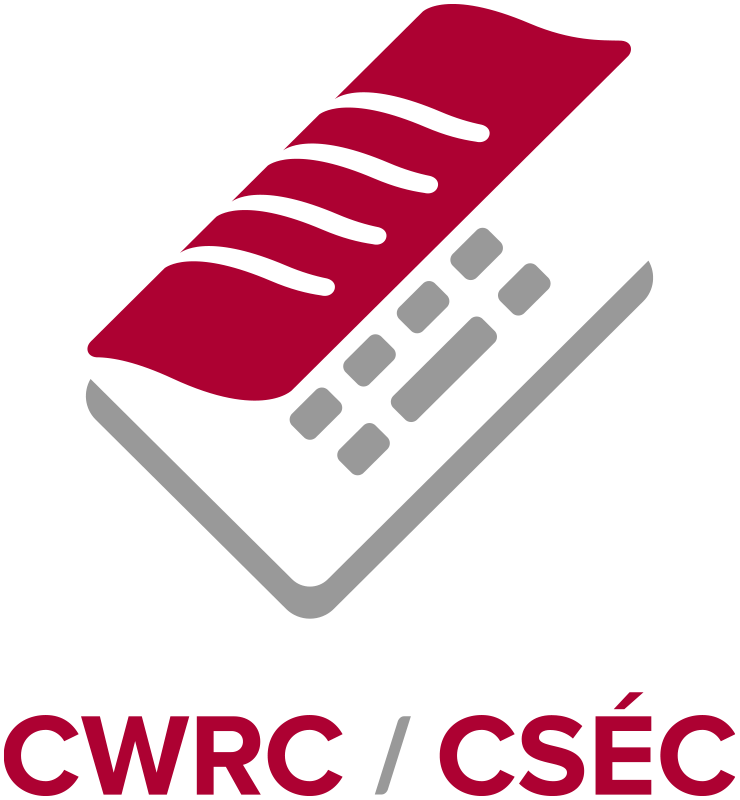From Slashdot a story about an FBI game/interactive that is online and which aims at Countering Violent Extremism | What is Violent Extremism?. The subtitle is “Don’t Be A Puppet” and the game is part of a collection of interactive materials that try to teach about extremism in general and encourage some critical distance from the extremism. The game has you as a sheep avoiding pitfalls.
Geofeedia ‘allowed police to track protesters’

From the BBC a story about US start-up Geofeedia ‘allowed police to track protesters’. Geofeedia is apparently using social media data from Twitter, Facebook and Instagram to monitor activists and protesters for law enforcement. Access to these social media was changed once the ACLU reported on the surveillance product. The ACLU discovered the agreements with Geofeedia when they requested public records of California law enforcement agencies. Geofeedia was boasting to law enforcement about their access. The ACLU has released some of the documents of interest including a PDF of a Geofeedia Product Update email discussing “sentiment” analytics (May 18, 2016).
Frome the Geofeedia web site I was surprised to see that they are offering solutions for education too.
Access 2016
Yesterday I gave a talk at Access 2016. This conference brings together archivists and librarians interested in library technology. I was honoured to give the Dave Binkley Memorial Lecture at the end of the conference. My conference notes are here. My talk was about the ethics of digitization, or more generally datafication.
Mastaba Snoopy
From my students I heard about the game Mastaba Snoopy created in Twee and TiddlyWiki and being taught in another Humanities Computing course (our students are vectors of influence.) Here is a review where you can download the single HTML page that is the bizarre text adventure, Mastaba Snoopy is a Cronenbergian nightmare vision of childhood. The story takes place14,000 years in the future when a mutable alien has destroyed us and then reinvented itself following a collection of Peanuts comics. Play it.
Common Errors in English Usage
An article about authorship attribution led me to this nice site on Common Errors in English Usage. The site is for a book with that title, but the author Paul Brians has organized all the errors into a hypertext here. For example, here is the entry on why you shouldn’t use enjoy to.
What does this have to do with authorship attribution? In a paper on Authorship Identification on the Large Scale the authors try using common errors as feature to discriminate potential authors.
Instant History conference
This weekend I gave a talk at a lovely one day conference on Instant History, The Postwar Digital Humanities and Their Legacies. My conference notes are here. The conference was organized by Paul Eggert, among others. Steve Jones, Ted Underwood and Laura Mandell also talked.
I gave the first talk on “Tremendous Labour: Busa’s Methods” – a paper coming from the work Stéfan Sinclair and I are doing. I talked about the reconstruction of Busa’s Index project. I claimed that Busa and Tasman made two crucial innovations. The first was figuring out how to represent data on punched cards so that it could be processed (the data structures). The second was figuring out how to use the punched card machines at hand to tokenize unstructured text. I walked through what we know about their actual methods and talked about our attempts to replicate them:
I was lucky to have two great respondents (Kyle Roberts and Schlomo Argamon) who both pointed out important contextual issues to consider, as in:
- We need to pay attention to the Jesuit and spiritual dimensions of Busa’s work.
- We need to think about the dialectic of those critical of computing and those optimistic about it.
CWRC/CSEC: The Canadian Writing Research Collaboratory
The Canadian Writing Research Collaboratory (CWRC) today launched its Collaboratory. The Collaboratory is a distributed editing environment that allows projects to edit scholarly electronic texts (using CWRC Writer), manage editorial workflows, and publish collections. There are also links to other tools like CWRC Catalogue and Voyant (that I am involved in.) There is an impressive set of projects already featured in CWRC, but it is open to new projects and designed to help them.
Susan Brown deserves a lot of credit for imagining this, writing the CFI (and other) proposals, leading the development and now managing the release. I hope it gets used as it is a fabulous layer of infrastructure designed by scholars for scholars.
One important component in CWRC is CWRC-Writer, an in-browser XML editor that can be hooked into content management systems like the CWRC back-end. It allows for stand-off markup and connects to entity databases for tagging entities in standardized ways.
Monopoly’s Inventor: The Progressive Who Didn’t Pass ‘Go’ – The New York Times

I had read somewhere that Monopoly had originally been developed to teach the evils of monopolies, but hadn’t realized how interesting the story of the creation of Monopoly was. The New York Times tells the story in, Monopoly’s Inventor: The Progressive Who Didn’t Pass ‘Go’. This excerpted from a book titled, The Monopolists: Obsession, Fury, and the Scandal Behind the World’s Favorite Board Game. The article tells the story of Elizabeth Magie who developed a game called the Landlord’s Game which had two sets of rules to teach about the alternatives to monopoly capitalism. You play the game with a rule set where the monopolists get richer and then with a rule set where wealth is distributed more fairly. Alas, when Darrow adapted the game and sold it to Parker Brothers he left out the progressive side.
It strikes me as an interesting example where a game designed for a serious purpose gets adapted to be more fun and in the process loses its progressive purpose. A change in the rules and you don’t have a game that teaches.
New mobile app issues verbal safety warnings to Edmonton drivers

Edmonton has released a new mobile app called SmartTravel. The new mobile app issues verbal safety warnings to Edmonton drivers. You can get live warnings as you drive or before. Interesting idea.
Marking 70 years of eavesdropping in Canada
Bill Robinson has penned a nice essay Marking 70 years of eavesdropping in Canada. The essay gives the background of Canada’s signals intelligence unit, the Communications Security Establishment (CSE) which just marked its 70th anniversary (on Sept. 1st.)
The original unit was the peacetime version of the Joint Discrimination Unit called the CBNRC (Communications Branch of the National Research Council). I can’t help wondering what was meant by “discrimination”?
Unable to read the Soviets’ most secret messages, the UKUSA allies resorted to plain-language (unencrypted) communications and traffic analysis, the study of the external features of messages such as sender, recipient, length, date and time of transmission—what today we call metadata. By compiling, sifting, and fusing a myriad of apparently unimportant facts from the huge volume of low-level Soviet civilian and military communications, it was possible to learn a great deal about the USSR’s armed forces, the Soviet economy, and other developments behind the Iron Curtain without breaking Soviet codes. Plain language and traffic analysis remained key sources of intelligence on the Soviet Bloc for much of the Cold War.
Robinson is particularly interesting on “The birth of metadata collection” as the Soviets frustrated developed encryption that couldn’t be broken.
Robinson is also the author of one of the best blogs on Canadian Signals Intelligence activities Lux Ex Umbra. He posts long thoughtful discussions like this one on Does CSE comply with the law?

